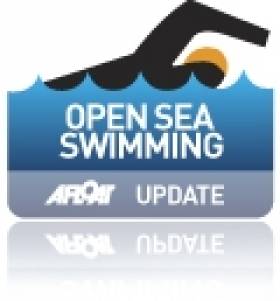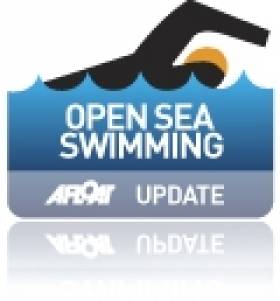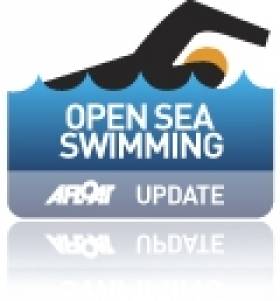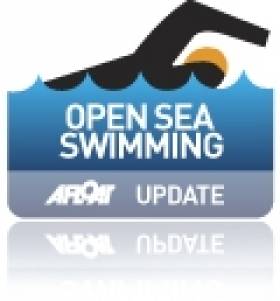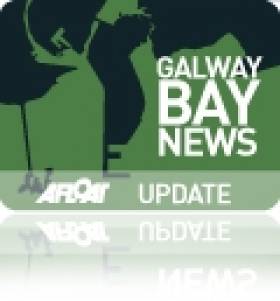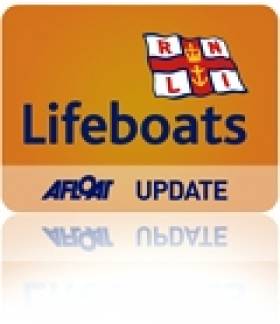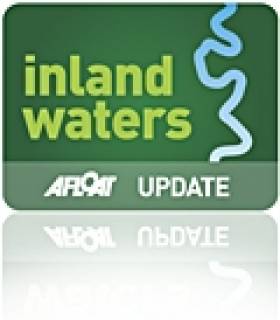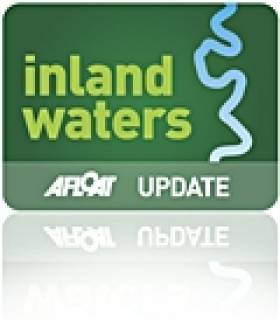Displaying items by tag: swimming
Electrician Preps For Killary Fjord Swim
#Fjord - The Irish Times reports on a Galway electrician who's planning to swim the length of Ireland's only fjord for a good cause.
Matthew O’Flaherty hopes to fundraise for the Irish Red Cross in Connemara when he attempts the 14km swim of Killary fjord from Rossroe to Leenane this Saturday 7 September - and he's asking the public to join him in running or walking the length of the fjord as he does it.
Aside from the distance, O'Flaherty's biggest obstacle is surely the cold, as the waters of the fjord will be much colder than at Salthill, where he's doing his training swims.
The Irish Times has more on the story HERE.
Dun Laoghaire Harbour Annual Swim This Coming Sunday
#DunLaoghaire - The Dun Laoghaire Harbour Annual Swim for 2013 takes place this coming Sunday 8 September.
The men's and ladies' swimming races will both follow the same course starting at the RNLI boathouse, along the East Pier slipway then across the National Yacht Club pontoons, around the lifeboat mooring and along the length of Carlisle Pier, then directly across to the East Pier Lighthouse and along the pier to finish at the slipway.
The men's race is set to start at 11.30am and the ladies' race at 1.45pm, with a Family Fun Race to be held between Carlisle Pier and East Pier at 12.45pm.
All harbour users are reminded to keep clear of the swimmers for the duration of the event.
Corkonian Is First Person To Swim Round Bere Island
#Swimming - Open-water swimmer Carol Cashell became the first person to swim around Bere Island when she completed her gruelling charity challenge on Saturday morning (31 August).
As previously reported on Afloat.ie, the Cork city resident had plenty of experience to fall back on when taking on the challenging 24km course around some seriously rocky and exposed coastline, setting out at 6.50am for an early start.
But she made short work of the feat, making it round the island in a blistering 7 hours 14 minutes.
Cashell was accompanied by RNLI crew members Marney T O’Donoghue, Sean Bawn O’Sullivan, Cian Murphy and Alan Cody and supported by her own team of Owen, Ray and Rob from Cork City.
The Castletownbere lifeboat Annette Hutton accompanied her for the final leg of the swim, and she was warmly welcome by her relatives, friends and RNLI supporters when she reached the finish line.
"This is a marvellous achievement and we are delighted that Carol completed the swim around Bere Island without a hitch," said local lifeboat fundraising secretary Sheila O’Driscoll.
"It is great for our local lifeboat that Carol is using her swim to raise funds for us and we are very grateful to her."
Lifeboat station mechanic Marney T O’Donoghue made a presentation to Cashell on behalf of the RNLI at a gathering in the lifeboat station.
Speaking afterwards, the swimmer thanked all who had supported her on the day and helped make her latest challenge a reality.
Cork Woman To Swim Round Bere Island
#Swimming - An open-water swimmer whose mother hails from the Beara Peninsula in West Cork is to complete a gruelling swim around Bere Island in aid of Castletownbere RNLI.
Carol Cashell, from Cork City, has set the challenge to raise funds and awareness of the RNLI, and the swim will take place this Saturday 31 August.
Having already completed the Cork-to-Cobh and Lake Zurich marathons, she has spent the winter months getting ready for the 28-mile swim around New York's Manhattan Island in June, closely followed by the 2-Way Channel Relay in July.
Cashell’s latest swim will be the 24km route around Bere Island, and this will be particularly challenging as some of the island’s coast is heavily exposed to the Atlantic ocean.
However, Cashell has plenty of relatives locally and they, along with the RNLI volunteers, will be supporting her on Saturday.
Local lifeboat fundraising secretary Sheila O’Driscoll, said: "It’s been a busy a summer for Castletownbere lifeboat and sadly there have been a number of tragedies around our coast in the last few months.
"We are delighted that Carol is doing this swim to help raise funds for our local lifeboat. Sponsorship cards are available in all the local businesses."
Speaking of the challenge, Carol Cashell commented: "I swam in Castletownbere last week. The jellyfish are much bigger than what we have in Cork Harbour at the moment - must be something in the West Cork water!"
Galway Bay Charity Swimmers Raise €80,000
#GalwayBay - Even swarms of jellyfish weren't enough to stop the more than 50 swimmers who took a dip for a good cause in the eighth annual Frances Thornton Memorial Galway Swim last weekend.
As the Irish Independent reports, hundreds were lined up at Blackrock Tower in Salthill on Saturday 27 July to welcome the swimmers at the end of their 13km open sea swim from Aughinish in Co Clare on the south shore of Galway Bay.
And together they raised some €80,000 for Cancer Care West, bringing the total over all eight swims to almost half a million euro.
The Irish Independent has more on the story HERE.
#RNLI - Enniskillen RNLI will host the revived Castle Island charity swim and family fun morning in Enniskillen, Co Fermanagh on Sunday 11 August.
The swim traditionally took place each year with the support of the Blake family.
And Enniskillen RNLI have hailed as a "great honour" the opportunity for its local volunteer crew to revive the swim in association with sponsors Blakes the Hollow, Western Cars and The Print Factory.
The 750m swim on Lough Erne is open to swimmers of all ages either individually or in small groups such as youth clubs, sports clubs or simply groups of friends.
Enniskillen RNLI says the emphasis for this swim is for everyone to have fun and for that reason, if required, novice swimmers may complete the swim in a well-fitted lifejacket or buoyancy aid but must be confident that they can complete the distance.
Lifeboat crew not swimming themselves will also be present on the day to provide safety cover for the event.
Registration for the swim will take place at 12 noon on the day, followed by a short safety briefing. Sponsorship forms are available by email or can be collected at The Wig & Crown, Blakes the Hollow and Western Cars. For further information contact Adrian at 07974 730456.
In other news, RTÉ Radio 1’s The Business will broadcast live from Bundoran RNLI lifeboat station this Saturday morning 3 August.
The focus of the show will be on the business of Bundoran being a seaside resort - a reputation the Donegal town has enjoyed for more than two centuries.
Speaking ahead of his visit, programme host George Lee said: "I'm really looking forward to broadcasting from Bundoran, particularly on a bank holiday weekend. I'm hoping to experience lots of surfing, slots machines and ice-creams.
"On the show we'll be looking back at the heyday of the dancehalls, we'll be joined by Bundoran regular Ramona Nicholas from Dragon's Den, we'll be speaking to two men making money from oil exploration and lots, lots more."
The Business is broadcast Saturday morning at 10am on RTÉ Radio 1.
Young Man Drowns In Cavan Lake
#Drowning - RTÉ News and The Irish Times are reporting that a man has died after getting into difficulty while swimming with friends at Knocknagarton Lake near Virginia in Co Cavan last night (Monday 24 June).
The as-yet-unnamed 26-year-old was taken to Cavan General Hospital where he was pronounced dead. A post-mortem has been scheduled to be carried out today.
Aquatic Sporting Bodies Move To New Irish Sport HQ
#IrishSport - Ireland's national bodies for angling, canoeing and swimming have moved into their new home on the National Sports Campus.
The new Irish Sport HQ in Blanchardstown, west Dublin was officially opened by Taoiseach Enda Kenny on Wednesday 29 May.
Among the 19 sporting bodies that have followed the FAI in relocating their headquarters to the new centre are the Angling Council of Ireland, Swim Ireland and Canoeing Ireland.
Opening the facility, the Taoiseach said: "I'm delighted that significant progress has been made in the development of the National Sport Campus over the past 12 months.
"The opening of the Irish Sport HQ and the arrival of 19 national governing bodies is a major step in the development of the campus. Today's milestone will also help foster the sense of community and co-operation which I know already exists in Irish sport."
Minister for Sport Leo Varadkar also expressed his delight at being present for the opening of the Irish Sport HQ.
"The campus is now well on the way to being a national training centre for sport," he said. "It shows what can be achieved when you work on a realistic scale, within realistic budgets, in partnership with the sporting bodies."
Shannon Missing Navigation Mark at Athlone
#InlandWaterways - Waterways Ireland advises masters and owners that a green starboardhand navigation mark is reported missing just south of Athlone Lock on the eastern side of the Shannon Navigation opposite the old Athlone Canal entrance.
Masters should proceed with caution when navigating this section of the river.
Elsewhere on the Shannon, a triathlon swimming training course is now set out in Lough Key between Castle Island and the mainland to the west, in an area off the navigable channel.
This will be in place until the end of September and is marked by four yellow buoys. When swimmers are on the course they will be accompanied by a safety boat and will be wearing high visibility swim hats.
Training will take place Mondays, Wednesdays and Fridays from 7am till 8am and Tuesday and Thursday from 6pm till 8pm. Masters are requested to navigate at slow speed and with a low wash when passing the area.
Further information may be had from Donal Kennedy of Lough Key Triathlon Club at 086 109 2626 or [email protected].
Meanwhile, a swimming event will take place on Sunday 9 June from Shannon Harbour to Banagher Harbour.
Masters are requested to navigate at slow speed and with a low wash when passing the area during the event, which will take place between 1pm and 3.30pm.
For more details contact Jerry O’Meara of Shannonside Sub Aqua Club at 087 776 4252 or [email protected].
#InlandWaterways - Waterways Ireland is advising masters and users of the Shannon Navigation that a triathlon event will take place on Saturday 8 June in the environs of Portrunny Harbour.
The swimming course will be laid out adjacent to the moorings in the harbour, and will be active from 11.30am till 1pm on the day.
Swimmers on the course will be accompanied by a safety boat and kayaks.
Masters are requested to give the swimmers a wide berth and to navigate at slow speed and with a low wash when passing the area, and to heed any instructions or advice given by the event marshals.


























